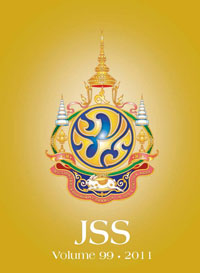Symbolism in city planning in Cambodia from Angkor to Phnom Penh
Main Article Content
Abstract
Phnom Penh was a trading port when Angkor Thom fell to a Siamese army in 1431. Its choice as the site of a new capital for the Kingdom of Cambodia took account of the geographic symbolism of its location, while its urban planning incorporated additional symbolism believed necessary to legitimise royal power. The symbolism evident in the layout of pre-modern Phnom Penh derived from three sources: from Hindu-Buddhist cosmological beliefs that found their mature Khmer expression in Angkor Thom; from beliefs about the legitimisation of royal power in Theravada Buddhism; and from the principles traditionally applied in the design of Tai centres of power. The first rested on correspondences believed to exist between the divine macrocosm and the mundane microcosm. The second emphasized the significance of merit. The third defined a status hierarchy based on the direction of flow of the rivers on which the capitals of Tai polities were always located.


